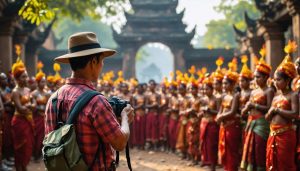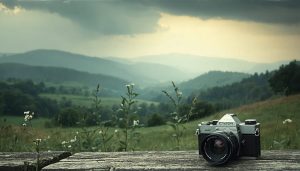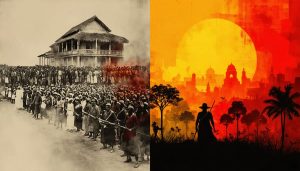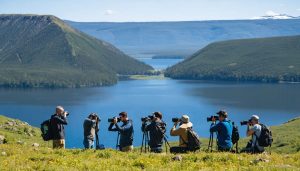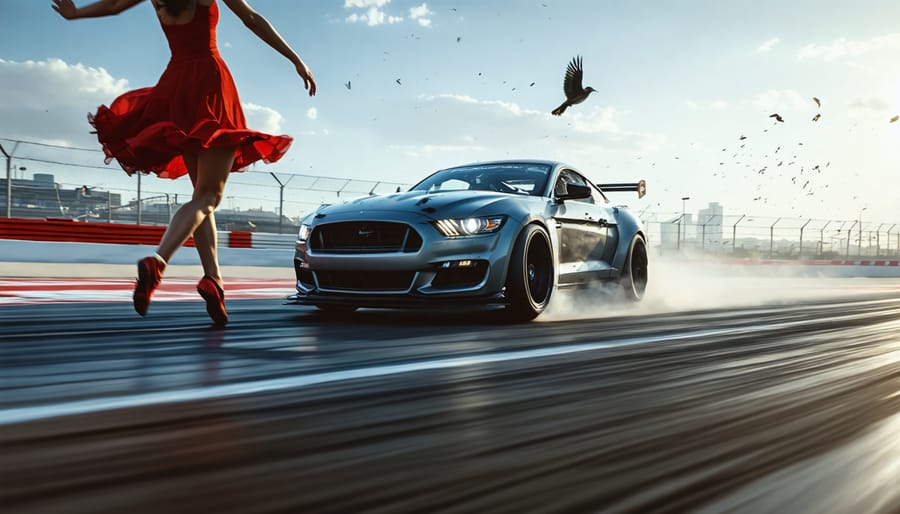
Freeze split-second moments with precision by setting your shutter speed to at least 1/1000th of a second for fast-moving subjects like sports or wildlife. Master continuous autofocus (AI Servo for Canon, AF-C for Nikon) to track moving subjects seamlessly across your frame, keeping them tack-sharp throughout the action sequence. Position yourself strategically by anticipating your subject’s movement path and establishing a clear background that won’t compete with the primary action.
Mastering action photography demands both technical precision and creative vision – from capturing the raw power of motorsports to the graceful motion of dancers. Professional action photographers consistently deliver stunning results by combining fast glass (f/2.8 or wider), rapid burst modes, and decisive timing to capture peak moments of intensity.
Whether you’re shooting high-speed athletics or street photography, these foundational techniques create compelling visual stories that freeze time while conveying dynamic energy and movement. Each frame tells a complete story, transforming fleeting moments into lasting impressions that resonate with viewers.
Essential Camera Settings for Freezing Motion
Shutter Speed Mastery
Mastering shutter speed is crucial for capturing stunning action shots, and knowing which speed to use can make the difference between a blurry mess and a powerful image. For most sports and fast action, start with 1/1000th of a second as your baseline – this will freeze most typical athletic movements and racing vehicles.
When photographing runners or cyclists, you can often drop to 1/500th of a second, which still freezes the action while potentially allowing more light into your sensor. For creative effects, try experimenting with slower speeds around 1/60th to 1/125th of a second while panning with your subject – this technique creates a sharp subject with a beautifully blurred background that conveys speed and motion.
For extremely fast subjects like race cars or birds in flight, you’ll want to push your shutter speed even higher – 1/2000th or faster. Conversely, when shooting indoor sports or in low-light conditions, you might need to compromise with slower speeds around 1/250th of a second, paired with a wider aperture and higher ISO.
Remember that these are starting points – factors like subject distance, direction of movement, and lighting conditions all influence your ideal shutter speed. Don’t be afraid to experiment and break these guidelines when artistic vision calls for it. Sometimes a slight blur can add drama and convey movement better than a completely frozen moment.
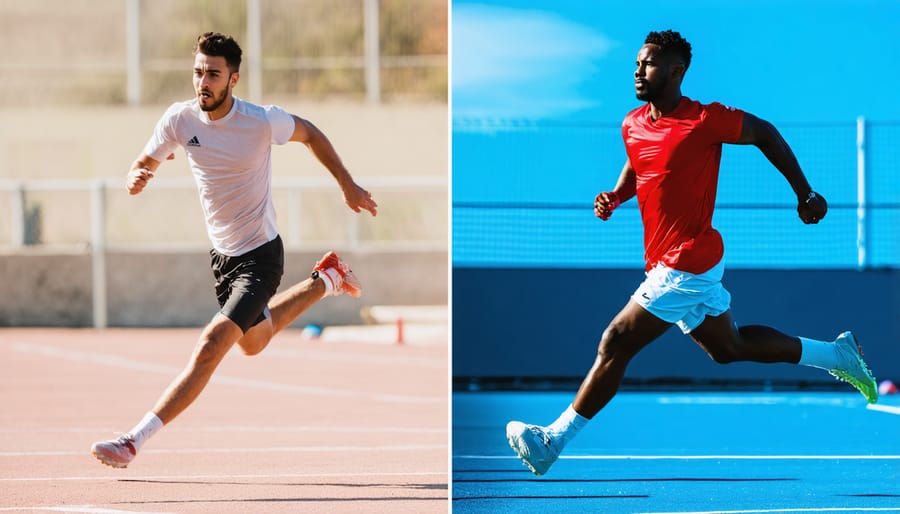
ISO and Aperture Balance
When shooting action, finding the perfect balance between ISO and aperture is crucial while maintaining those essential fast shutter speeds. Think of it as a three-way balancing act where one setting’s adjustment affects the others. For outdoor sports and action, you’ll typically want to start with the fastest shutter speed needed to freeze motion – usually 1/1000th of a second or faster.
From there, set your aperture based on your creative vision and depth of field needs. A wider aperture (like f/2.8 or f/4) lets in more light and helps maintain faster shutter speeds, but you’ll need to be precise with your focusing. For team sports where you need more players in focus, consider f/5.6 to f/8, understanding you’ll need to compensate with ISO.
The ISO becomes your final adjustment point. In bright conditions, you might get away with ISO 100-400, but don’t be afraid to push higher when needed. Modern cameras handle low-light settings remarkably well, and it’s better to have a slightly noisy image that’s sharp than a clean one that’s blurry.
A practical approach is to set your camera to Auto ISO with a minimum shutter speed limit. This lets you concentrate on composition while ensuring your shutter speed never drops below what’s needed to freeze action. Just remember to check your images periodically and adjust if noise becomes too prominent.
Real-World Action Shot Examples
Sports Photography
Sports photography represents one of the most dynamic and challenging forms of action photography, demanding split-second timing and technical precision. When capturing athletes in motion, positioning is crucial – try setting up near key action areas like the goal line in soccer or the finish line in track events. Successful sports photographers often use burst mode with shutter speeds of at least 1/1000th of a second to freeze intense moments of athletic prowess.
Basketball games offer excellent opportunities for dramatic shots, particularly when photographing players mid-jump for a dunk or rebound. Position yourself at court level and slightly ahead of the action to capture facial expressions alongside the athletic movements. In football, following the ball carrier with your camera while maintaining a slightly wider frame helps capture both the intensity of the run and any incoming tackles.
Swimming events require special attention to timing and anticipation. Focus on the turn walls or the moment swimmers emerge from the water during butterfly strokes for particularly compelling shots. For track and field, pre-focus on hurdles or landing pits in field events to capture athletes at peak moments of exertion.
One often-overlooked aspect of sports photography is capturing the emotional moments between plays. Athletes celebrating a victory, consoling teammates after a loss, or intensely focusing before a crucial moment can tell powerful stories. Remember to shoot in RAW format to preserve detail in challenging lighting conditions, especially in indoor arenas or during evening games where artificial lighting can create tricky exposure situations.
Don’t forget to experiment with different angles – shooting from elevated positions can reveal interesting patterns in team sports, while ground-level shots can emphasize the power and speed of athletes in motion.
Wildlife in Motion
Wildlife photography presents unique challenges when capturing animals in their natural habitat, but the results can be absolutely breathtaking. Success often comes down to a combination of patience, preparation, and quick reflexes. Start by researching your subject’s behavior patterns – knowing when and where animals are most active will dramatically increase your chances of getting that perfect shot.
For the technical aspects, you’ll want to master your camera settings for nature shots before heading into the field. Use continuous autofocus (AI Servo for Canon, AF-C for Nikon) to track moving subjects, and opt for burst mode to capture rapid sequences of movement. A fast shutter speed, typically 1/1000 second or higher, is essential for freezing motion.
Consider positioning yourself where animals naturally gather – watering holes, flight paths, or feeding grounds offer excellent opportunities. Morning and evening golden hours not only provide beautiful lighting but also tend to be when wildlife is most active. Pack a telephoto lens (300mm or longer) to maintain a safe distance while getting close-up shots.
Look for decisive moments: a bird spreading its wings before takeoff, a cheetah tensing before a sprint, or a deer leaping over a stream. These split-second actions tell compelling stories. Remember to compose your shots with space in front of the moving animal, giving them “room to move” within the frame.
When possible, get down to eye level with your subject. This perspective creates a more intimate connection and helps separate the subject from potentially distracting backgrounds. Stay patient and ready – wildlife rarely performs on cue, but when they do, you’ll want to be prepared to capture that perfect moment.
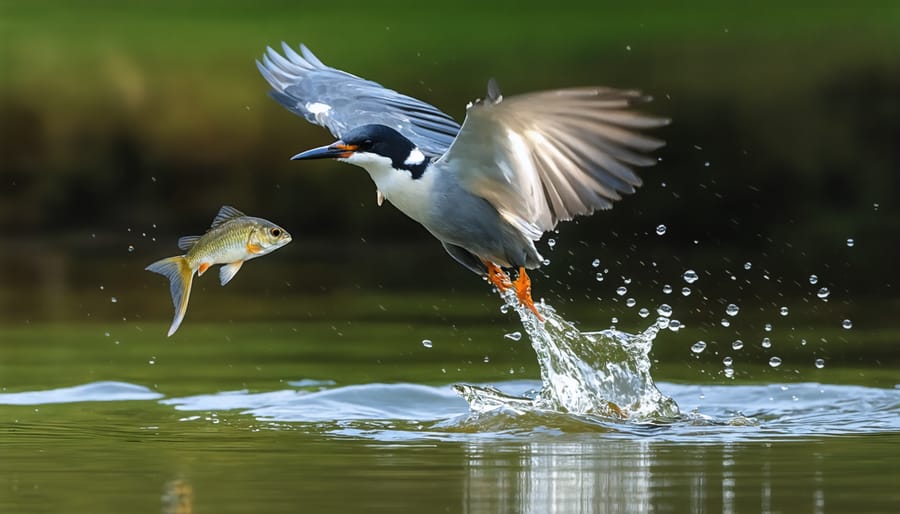
Street Photography Action
The vibrant energy of city streets provides endless opportunities for capturing dynamic moments in action photography. From bustling crosswalks to street performers in mid-leap, urban environments are rich with spontaneous scenes waiting to be documented.
One classic example is the “decisive moment” shot of pedestrians crossing a rain-soaked street, where timing is crucial to capture both motion and reflection. Position yourself at a busy intersection during rush hour, set a faster shutter speed (at least 1/250s), and wait for people hurrying through the scene with umbrellas or briefcases.
Street festivals and performances offer particularly dynamic subjects. A street dancer freezing mid-spin, a skateboarder catching air, or a street musician’s passionate gesture can all make for compelling action shots. When photographing these scenes, consider using burst mode to capture the peak of action, and remember to be mindful of street photography ethics when documenting people in public spaces.
Urban wildlife can also provide unexpected action opportunities. Pigeons taking flight, squirrels leaping between trees, or even dogs playing in city parks offer chances to practice tracking moving subjects against architectural backgrounds. Try using zone focusing techniques to maintain sharp focus on unpredictable subjects.
For dramatic urban action shots, experiment with different perspectives. Shoot from overhead bridges to capture the flow of crowds below, or get low to the ground to photograph cyclists zooming past. The contrast between static architectural elements and moving subjects creates visual tension that enhances the sense of motion in your images.
Remember to pay attention to background elements in urban settings. Clean backgrounds with minimal distractions help emphasize your moving subject, while thoughtfully included architectural elements can frame the action and provide context to your street scenes.
Advanced Techniques for Dynamic Shots
Panning for Motion Blur
Panning is a dynamic technique that creates a stunning sense of motion while keeping your main subject sharp and clear. By following your subject’s movement with your camera while using a slower shutter speed, you can capture that magical combination of crisp detail and artistic blur that tells the story of speed and action.
To master this technique, start with shutter speeds between 1/15 and 1/60 of a second, depending on your subject’s speed. For instance, when photographing a cyclist, try 1/30th of a second as your starting point. Position yourself parallel to your subject’s path and practice tracking their movement smoothly before taking the shot.
The key to successful panning lies in your body movement. Plant your feet firmly, pivot at your hips, and keep your arms tucked close to your body. As your subject approaches, start tracking them before pressing the shutter, maintaining the movement through and after the exposure. Think of it like painting a smooth brush stroke – the motion should be fluid and consistent.
Some real-world scenarios where panning shines include:
– Race cars at motorsport events
– Runners during marathons
– Birds in flight
– Cyclists on a track
– Athletes during sporting events
Remember that panning takes practice, and don’t get discouraged if your first attempts aren’t perfect. The background blur should appear as clean horizontal lines, while your subject remains in focus. Start with slower-moving subjects before progressing to faster ones, and experiment with different shutter speeds to find what works best for each scenario.
Pro tip: Using continuous autofocus (AI Servo for Canon, AF-C for Nikon) will help maintain focus on moving subjects during the pan.
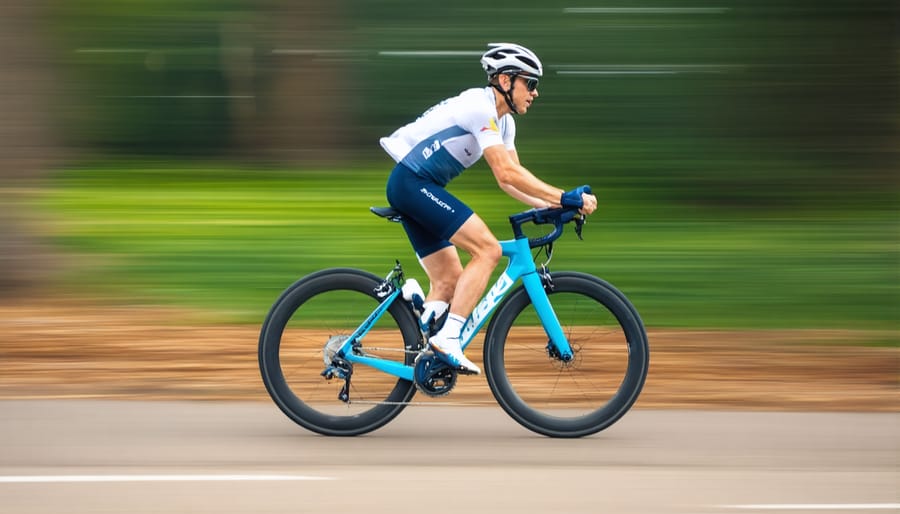
Burst Mode Strategies
Mastering burst mode is essential for capturing the perfect moment in action photography. By shooting in continuous bursts, you increase your chances of getting that split-second shot where everything aligns perfectly. Most modern cameras offer burst rates between 5-20 frames per second, giving you multiple opportunities to capture the decisive moment.
To use burst mode effectively, start by anticipating the action. If you’re photographing a basketball player going for a dunk, begin your burst sequence just before they leave the ground. This ensures you don’t miss the peak moment due to timing or reaction delay. Remember that faster burst rates usually mean smaller file formats or shorter burst durations, so adjust your settings based on your specific needs.
For sports and wildlife photography, pre-focusing on a specific spot where you expect the action to occur can help maintain sharp images throughout the burst sequence. Using back-button focus can also prevent your camera from hunting for focus during crucial moments.
Storage management is crucial when shooting in burst mode. Always carry extra memory cards and ensure they’re fast enough to handle your camera’s maximum burst rate. Consider shooting in JPEG instead of RAW if you need longer burst sequences or faster buffer clearing.
A practical tip: Don’t hold down the shutter for extended periods. Instead, use shorter, controlled bursts when you anticipate peak action. This approach helps manage storage space and makes culling through images more manageable later.
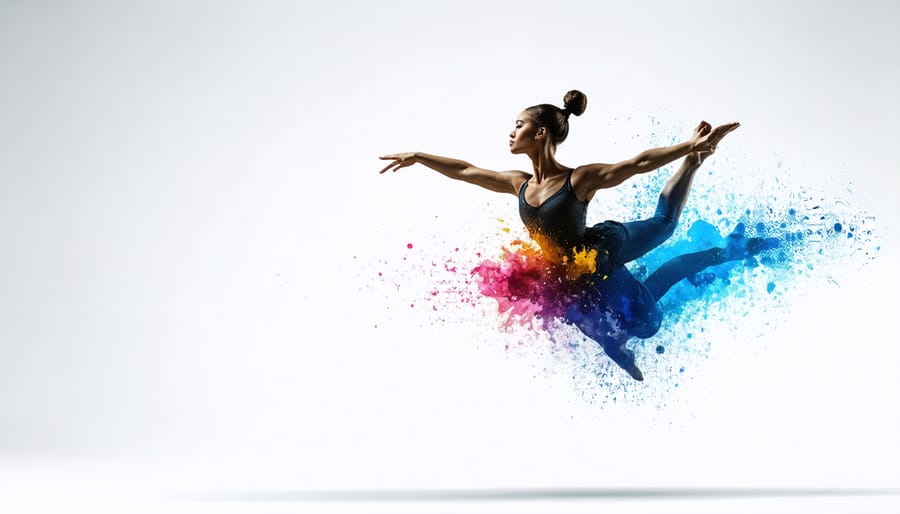
Focus Tracking Techniques
Mastering focus tracking is crucial for capturing sharp action shots, and modern cameras offer sophisticated tools to help you nail the focus every time. The key lies in understanding and properly configuring your camera’s autofocus system.
Start by selecting the appropriate AF mode – typically AI Servo (Canon) or AF-C (Nikon) – which continuously adjusts focus as your subject moves. This technology works similarly to close-up photography techniques, but with emphasis on movement prediction.
For best results, use these proven techniques:
Back-button focus separates autofocus from your shutter release, giving you more control over when to engage tracking. Simply assign AF to a rear button and keep it pressed while following your subject.
Zone AF or Dynamic Area AF modes work well for subjects moving in predictable patterns. These modes use a cluster of focus points to track movement, increasing your hit rate for fast-moving subjects like athletes or wildlife.
When shooting erratic movement, try 3D tracking (Nikon) or iTR AF (Canon). These modes use color and pattern recognition to maintain focus on your subject, even when they briefly move behind obstacles.
Remember to adjust your AF sensitivity settings based on the scene. Lower sensitivity helps maintain focus on your intended subject when other objects pass between you and your target, while higher sensitivity allows quicker response to sudden changes in subject movement.
Practice these techniques by tracking everyday moving objects like cars or pets before attempting more challenging subjects. With time, you’ll develop an instinct for which tracking method works best in different situations.
Common Mistakes and Solutions
Even experienced photographers encounter common challenges when shooting action. One frequent mistake is using too slow a shutter speed, resulting in unwanted motion blur. To address this, start with a minimum shutter speed of 1/500th of a second for most action shots, increasing to 1/1000th or faster for high-speed subjects like racing cars or birds in flight.
Another common pitfall is relying too heavily on continuous autofocus without proper technique. While AF-C (or AI Servo) mode is essential for action shots, it’s crucial to maintain your focus point on the subject’s most important area, typically the eyes or head. Practice tracking moving subjects in your everyday environment to build muscle memory.
Incorrect camera settings often lead to missed shots. Many photographers forget to adjust their ISO to accommodate faster shutter speeds, especially in challenging lighting conditions. Don’t be afraid to raise your ISO – modern cameras handle high ISO values remarkably well, and a slightly noisy sharp image is better than a clean but blurry one.
Poor positioning is another frequent issue. Instead of standing in one spot, anticipate where the action will unfold and position yourself accordingly. For sports, learn the basic rules and patterns of play to predict key moments. When photographing wildlife, study animal behavior to anticipate movement.
Finally, many photographers make the mistake of rapid-firing without purpose. While burst mode is useful, thoughtful timing often yields better results than simply holding down the shutter button. Practice reading the scene and timing your shots to capture peak action moments, whether it’s a dancer’s leap or an athlete’s winning goal.
Mastering action photography is an ongoing journey that combines technical skill, creative vision, and plenty of practice. As we’ve explored throughout this guide, successful action shots require a solid understanding of camera settings, perfect timing, and the ability to anticipate moments before they happen. Remember that every challenging shoot is an opportunity to learn and improve your craft.
Don’t be discouraged if your first attempts don’t match your expectations – even professional sports photographers spent years honing their skills. Start by practicing with predictable movements, like children playing in the backyard or pets running in the park, before moving on to more complex scenarios. Experiment with different shutter speeds, focusing techniques, and compositions to develop your own style.
Keep your camera ready and accessible, as action moments often appear unexpectedly. Review your images critically, noting what worked and what didn’t, and use these insights to refine your approach. Most importantly, enjoy the process of capturing these dynamic moments – there’s nothing quite like the satisfaction of freezing a perfect split second of action in a single frame.
















